We combine a bedroom for parents and a children's area in one room
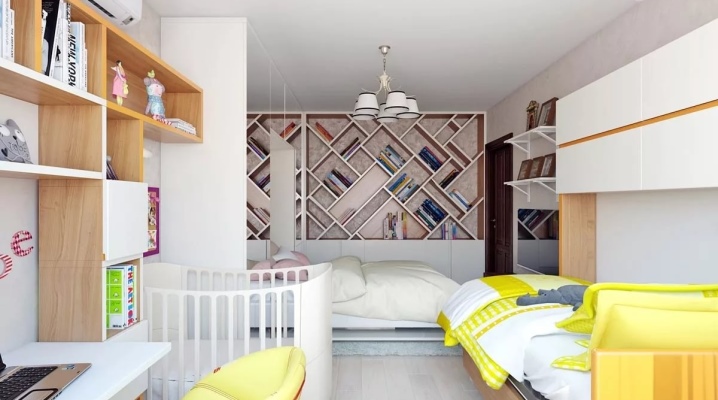
A spacious apartment or a private house where there is a room for every family member is the dream of many. However, most often it is necessary to equip the necessary functional areas in conditions of insufficient space. Combining several rooms in one is one of the best options. It is relevant, for example, for families where the birth of a child is expected soon. Therefore, for the first few months or even years of a baby's life, the nursery is combined with the parents' bedroom.
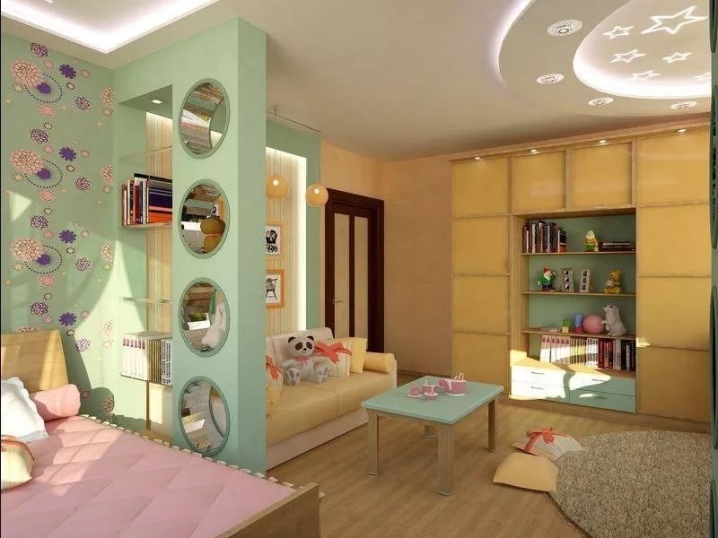
Pros and cons of combining
Of the various options for combining rooms in the same area, this one is the most common. Especially for families with small children. A newborn baby requires constant attention, so his crib is often transferred to the parent's bedroom so that the mother is always there.
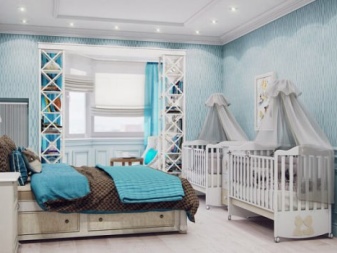
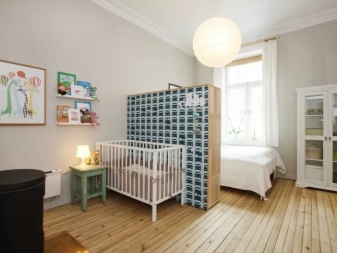
To ensure a comfortable existence for both adults and a child in the same room, it is necessary to carefully consider the design of the room, choose furniture, arrange decor items and accessories. This is not as difficult as it might seem in reality, since a small child does not yet need a lot of space or numerous furniture for a comfortable existence.
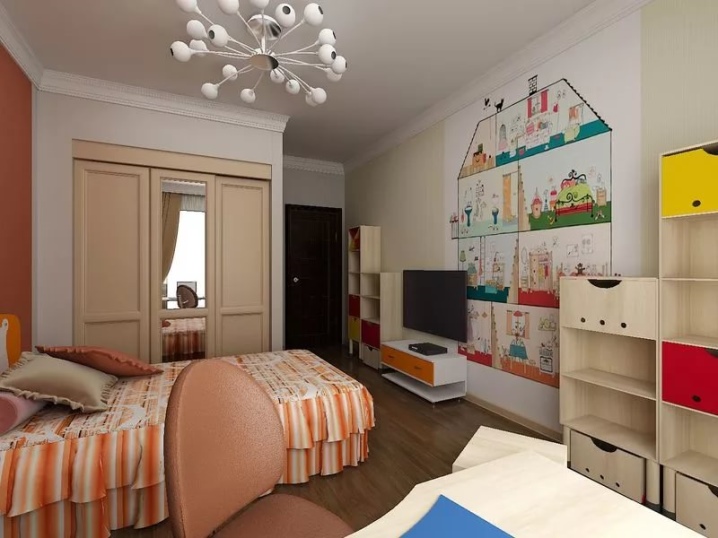
Of the advantages of this combination, several points can be distinguished:
- Close proximity of mother and child. This moment is especially important in the first few months of a baby's life. In addition, due to frequent feeding, a young mother often has to get up to her baby at night. It will be easier and more convenient to do this when the baby's crib is nearby.
- Constant monitoring of the child. A young mother will be much calmer when the baby is around. Anxious thoughts that the child is uncomfortable in the next room will disappear.
- Saving space. Small apartments do not always allow you to allocate a separate room for a child, especially if there are several children in the house. Therefore, for a while, you can combine a nursery and a bedroom in the same room.
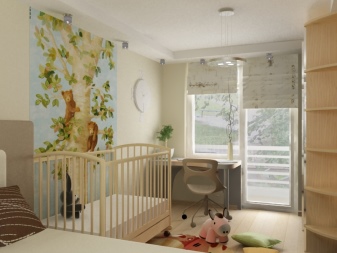
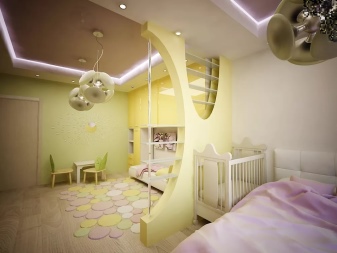
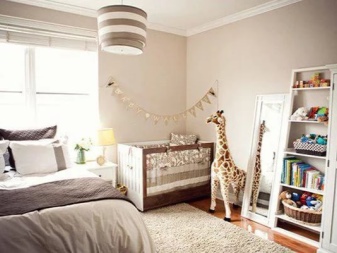

Considering this combination option, do not forget about some of its disadvantages.
- A small child requires silence and a comfortable atmosphere around. Loud music, TV, computer can cause some inconvenience to the baby. A child can be woken up by a loud alarm clock set for an adult. These points must be taken into account even at the stage of planning the combined room.
- If the bedroom is small, then there will be even less space left with a crib. Difficulty walking around the room or access to shelves, shelves, and other interior elements is possible.
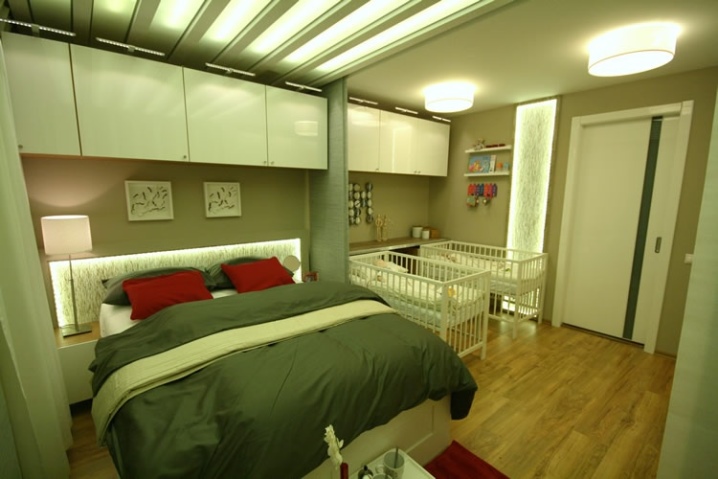
What to consider when dividing a room?
This largely depends on the age of the child and the square of the bedroom. Before starting work on rearranging furniture and decorating a room, you need to perform a few simple steps:
- Draw up a schematic plan of the room, taking into account the entrance door and existing windows or balcony.
- Conditionally divide the bedroom space into two zones - for children and adults. If the room has a window, then it is desirable that some of the natural light falls on the children's room.
- Decide on the color scheme of the room.
- Choose furniture and decide on the best option for its arrangement.
Perhaps, it will be necessary to carry out more large-scale measures for the arrangement of the room (to provide an additional source of heating, to mount a "warm floor", a multi-level ceiling, to install temporary partitions).
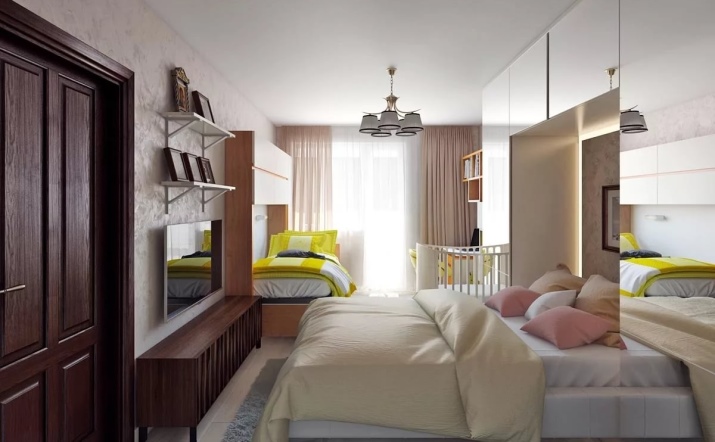
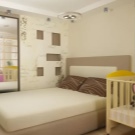
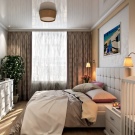
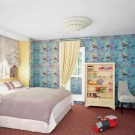

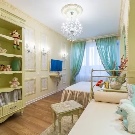
Layout and zoning
After developing the design and solving the main technological problems, you can proceed directly to the zoning of the room.
There are several options for the conditional division of a room into "adult" and "children's" areas:
- Installation of custom-made decorative structures based on the size and configuration of the room.
- Plasterboard partitions.
- Using a long curtain as a partition.
- Screens from various materials.
- Small arch device.
- Using pieces of furniture as dividers (this option is suitable for a square room, for example).
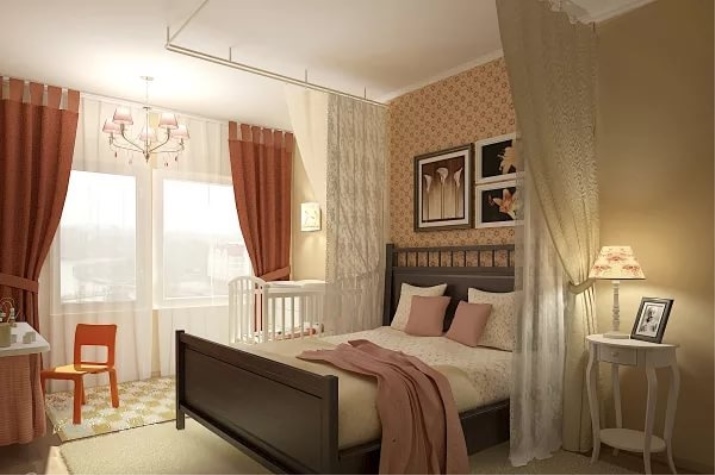
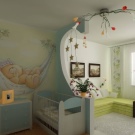
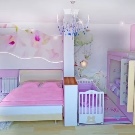
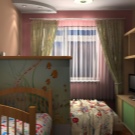
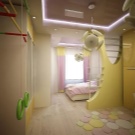
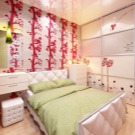
More original and interesting options include the device of a podium or multi-level ceiling to highlight a specific area.
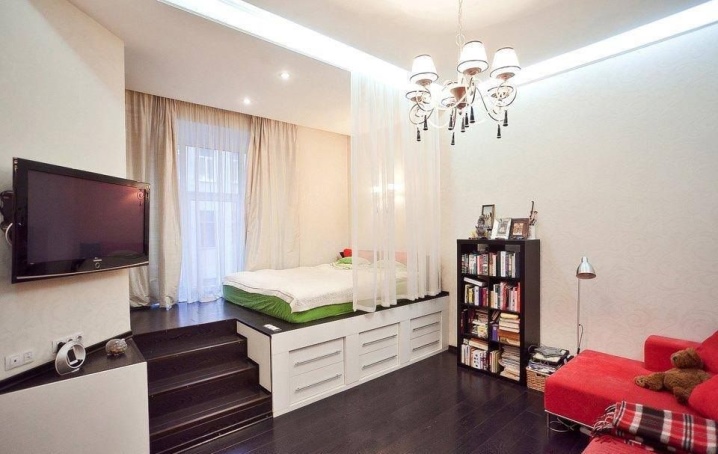
The choice of a suitable design and redevelopment option directly depends on the quadrature of the room. In a one-room apartment, in addition to the bedroom and the nursery, you can also leave a small space for the living room. An elegant screen or arch will help to separate these zones from each other. A separate room can be allocated for the living room in the double room, which means that there will be more space in the bedroom for the child and parents.
A small bedroom requires the most careful design development. Here every square centimeter of area will count. It will be necessary to abandon massive, heavy furniture, replacing it with mobile transformers. The baby's cot can be placed next to the adult bed without any partitions to save space. Particular attention will need to be paid to the color scheme and the presence of decorative ornaments.
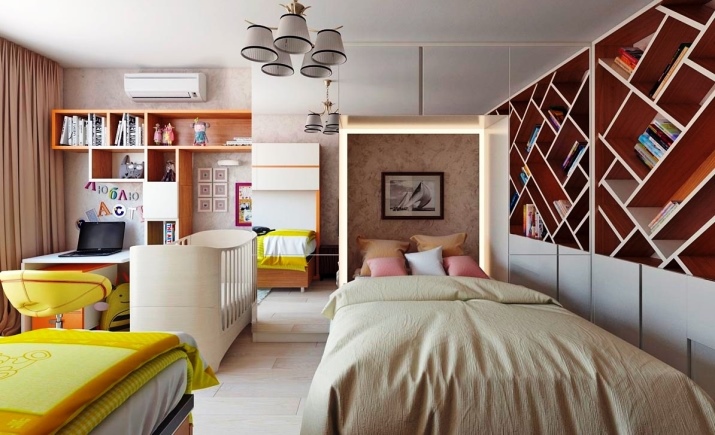

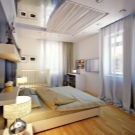

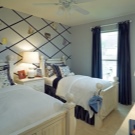
Room size 15, 16, 18 sq. m and more gives more opportunities for design. It mainly depends on the age of the child. The older he gets, the more free space he needs to play. An even more difficult option is to create a common room for two children and parents. Here you can consider the option with a bunk bed.
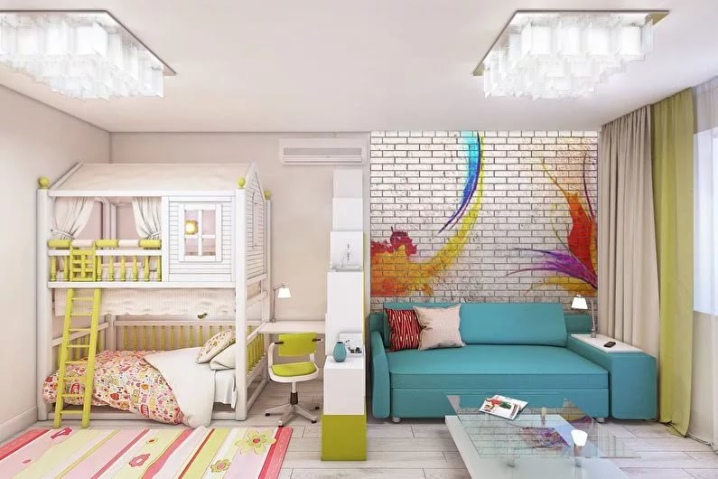
The corner for the child can be separated from the adult space with children's wallpaper with a print in the form of cartoon characters, fairy-tale characters, animals or toys. You can also choose more neutral options that will look harmonious on the "adult" territory. For example, flowers, stars, butterflies.
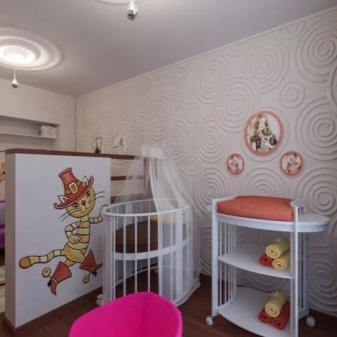
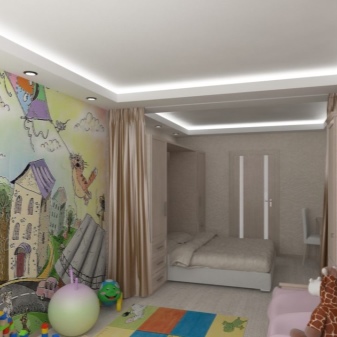
Fluorescent prints look especially beautiful on dark-colored wallpapers. Ornaments shimmer softly and beautifully at night, giving extra light and wonderfully decorating the bedroom. Most often, options with different types of design are chosen when the zones are separated from each other by a screen, arch or partition.
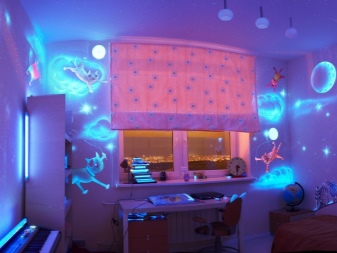
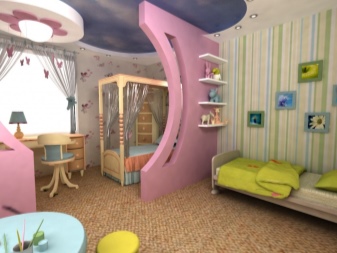
If the room is divided into several rooms only conditionally, then it is better to choose a neutral option. Light colors in decoration and decor will help to visually expand a small room. It is better to replace heavy curtains with light curtains, pleated blinds, roman blinds or roller shutters.

Furniture and bed placement
The choice of furniture and its placement are also directly related to the age of the child (or children) and the square of the room. For a small child, as a rule, this is a cot, a chest of drawers for things and a changing table. If the space is very limited, then the last two objects can be combined or do without them altogether.
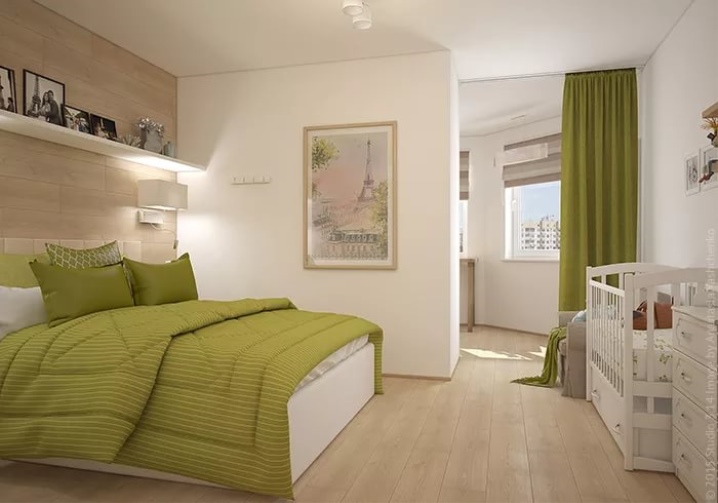
The selection and arrangement of furniture should be carried out in such a way that there is enough space in the room for a comfortable pastime for both parents and children. In this regard, the following requirements must be met for furniture for such a room:
- Compact dimensions (if possible, it is necessary to choose transformer models, for example, a sofa bed or an armchair bed).
- Multifunctionality (it is better to opt for sofas equipped with drawers for linen, bedding and other things).
- If possible, pieces of furniture should be kept in light colors.
- Environmental friendliness and safety for the child (rounded corners, absence of traumatic elements).
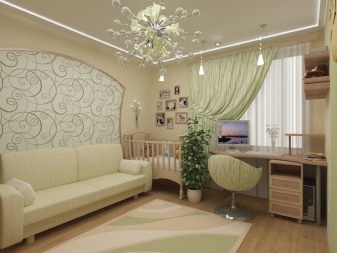
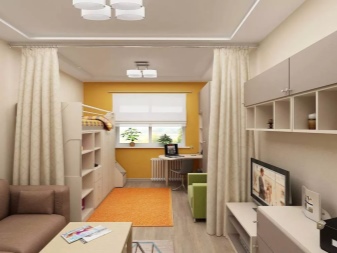
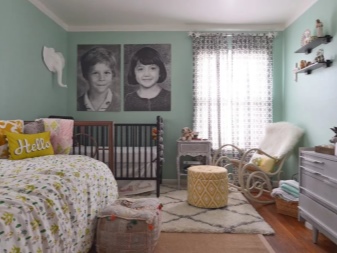
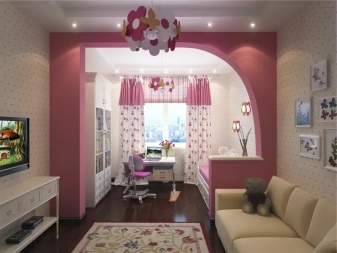
After the main pieces of furniture have been identified, you can begin to arrange them. As a rule, the largest item in a room is a bed or a sofa, so space is allocated for them first.
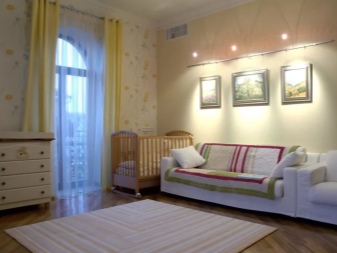
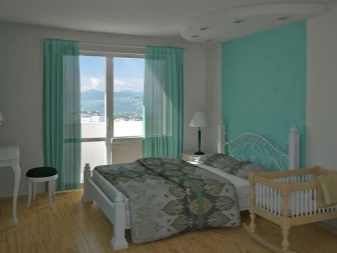
Usually the head of the bed is located against the wall, and the berth protrudes towards the middle of the room. If the room is narrow and long, then the bed is installed along one of the walls.
The crib can be positioned in different ways:
- In any free corner of the room.
- Opposite the parent's bed. This way the child will always be in the line of sight of adults.
- Next to the parents' bed. The cot pushed close to it helps to organize a joint sleep of mother and child. To do this, you need to remove one of the walls of the crib. The child will sleep in its place, but constantly feel the mother's warmth next to him. And mom will not have to get up at night to take the baby in her arms and feed. All this can be done faster and easier when the baby is very close.
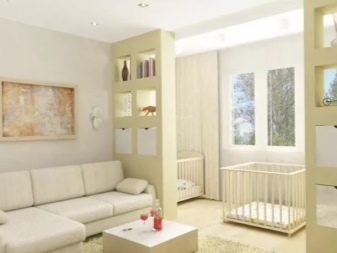


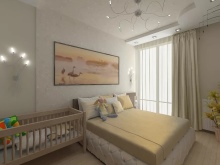
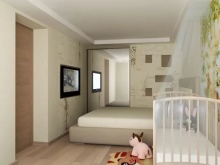
When choosing a place for a crib, you must not forget about the following things:
- There should be no heaters or radiators nearby. Dry hot air is harmful to the baby. In addition, the baby may accidentally burn himself when he reaches a source of heat.
- The bed should not be near a TV or computer. Noise, bright light, radiation will not benefit the child.
- There should be no outlets near the bed, as well as objects that collect a large amount of dust (carpets, curtains).
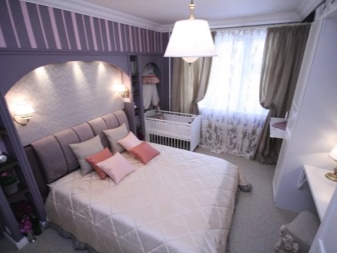

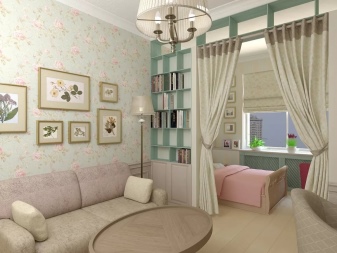
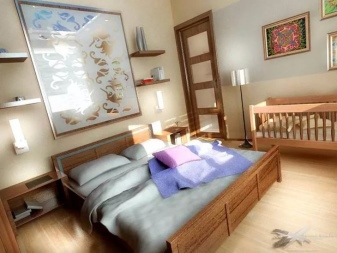
When the sleeping places are identified and arranged, you can start arranging the rest of the room. Do not clutter up the space with a large number of pedestals, shelves, dressers and wardrobes. Every piece of furniture should be used to its fullest. If there is no storage space in the room, then the clothes can be moved to the closet in the corridor or the closet. If the room is spacious enough, then a wardrobe will perfectly cope with the placement and storage of children's and adult things.
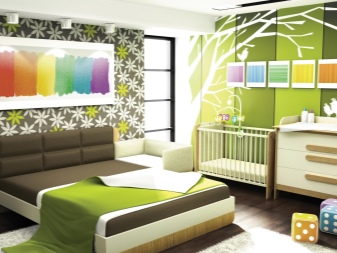
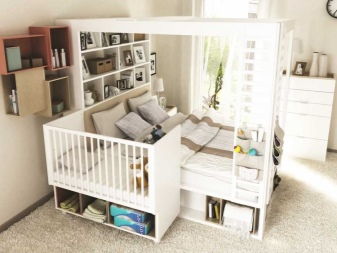
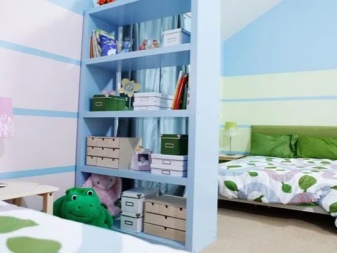
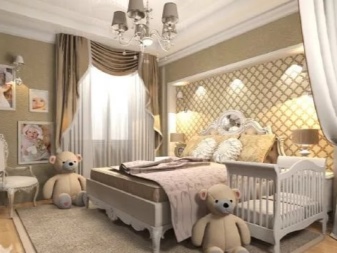
When the child grows up, instead of a crib, you can put a chair-bed or a small sofa. For a school-age child, consider purchasing a loft bed. This is the best option for a small room. The upper part of the structure is used as a sleeping area, and on the lower tier there is a school desk and shelves for storing school supplies.
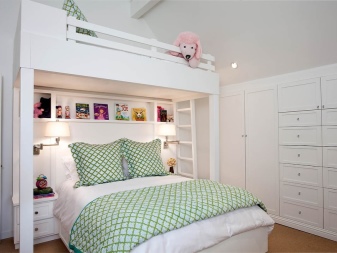
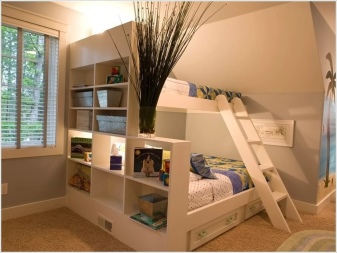
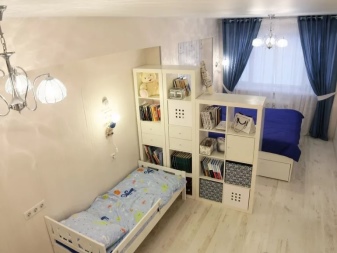
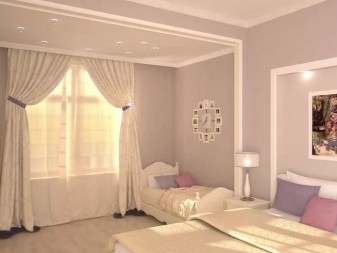
Lighting
Special attention should be paid to the lighting of the room. The light should not be harsh or too harsh. The atmosphere should be soothing and comfortable. If the room has good natural light, then a sconce and a chandelier will be enough.
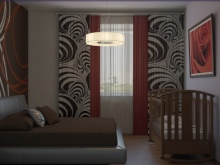

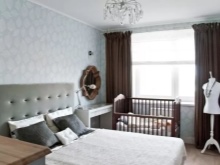
If a stretch or multi-level ceiling is provided in the room, then spotlights are most often used. They emit soft, diffused light that is pleasing to the eye. With the help of these lamps, you can select separate areas in the room (at the head of an adult bed or at a crib).
Night lamps, sconces, small floor lamps can be used as additional sources of illumination.
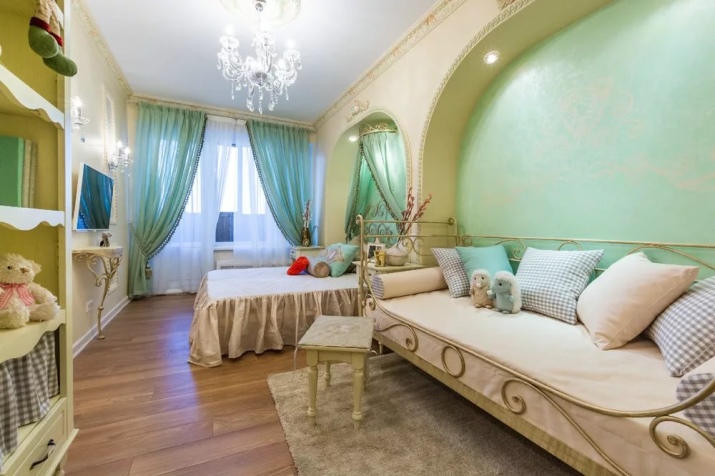
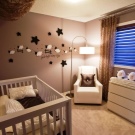
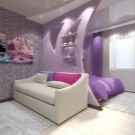

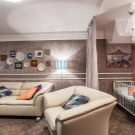
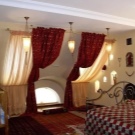
Decor options for the bedroom of the child and parents
Decorating a room is the most enjoyable and creative stage in all the design planning work for combined rooms.
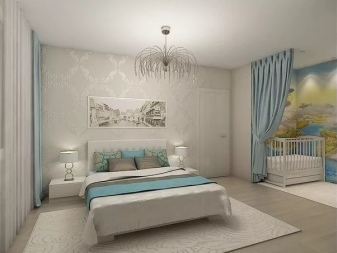

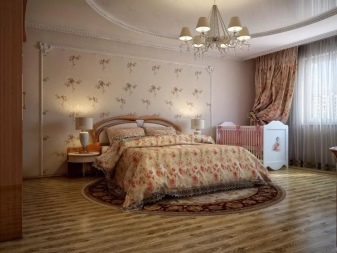
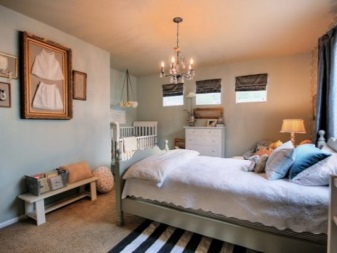
The main decorative elements in the room are the walls. In a small room for wall decoration, it is best to use materials of light, dim colors (pistachio, blue, sand, pink, light green). Wallpaper, paint, plaster should be lighter than room furniture. This will make the interior look easier.
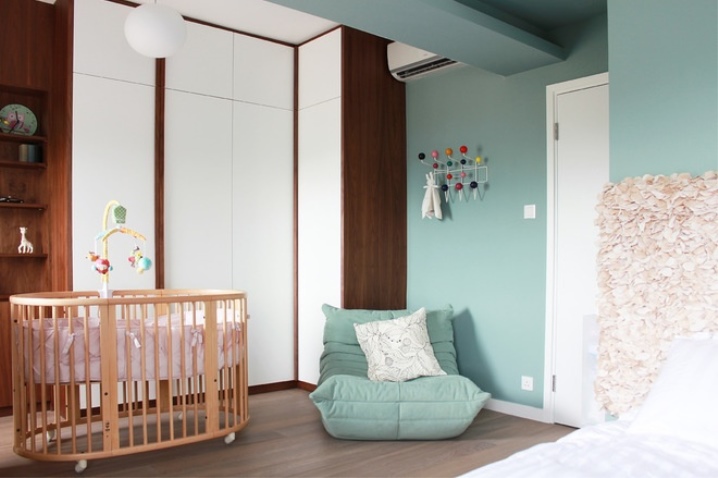
The wallpaper can be the same for the whole room or different for each zone.Photo wallpapers, photographs, posters, paintings, posters with educational information (for example, the alphabet) can be used as a decoration for a children's corner. A beautiful night light in the form of a favorite toy, a panel in the form of an applique, a puzzle picture, an original clock and other decorative elements can also become part of the decoration.
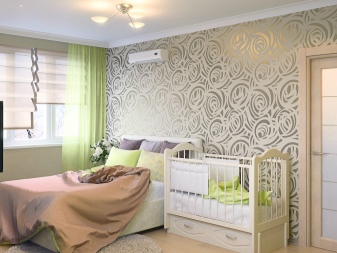
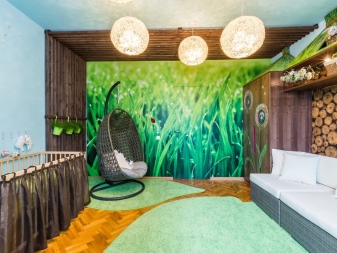
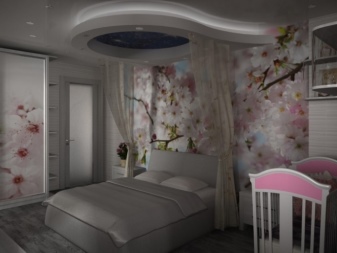
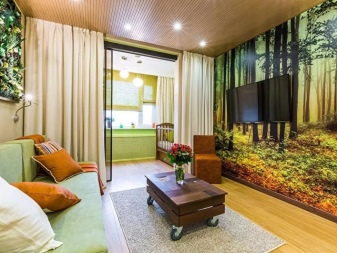
For a very small child, a beautiful hanging toy, a mobile over the bed or an airy, lightweight canopy will become an adornment. Do not use porcelain or other figurines and figurines made of fragile materials, too small or sharp objects as decorations. This can be dangerous for a small child.

The adult half of the room can be decorated with paintings, photo wallpapers and other items in calmer colors and decor.
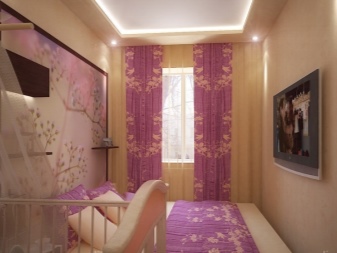
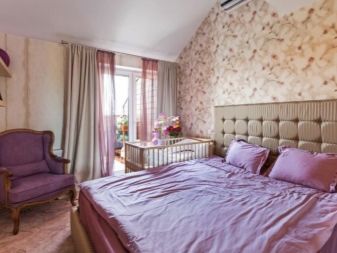
For the decoration of the window space, curtains and curtains made of light, airy fabrics are recommended. They will decorate the interior and protect the child from direct sunlight.














The comment was sent successfully.